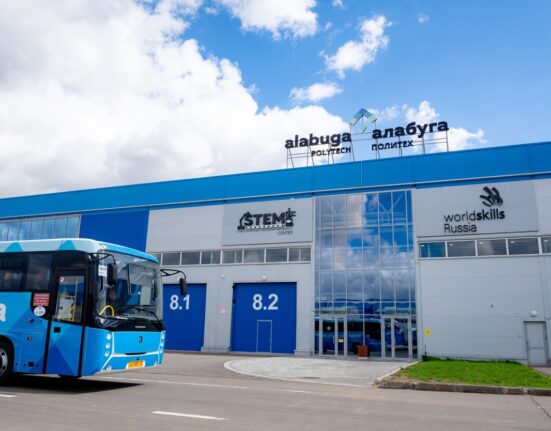The integration of Central Asian states and the formation of a common space for cooperation have always been considered an inevitable process that will sooner or later determine the main trends in the region’s development. The very understanding of Central Asia, based on historical, cultural and religious commonalities, is not about creating new but rather re-establishing old ties, taking into account modern realities and the peculiarities of political and economic priorities of each country, reads the following article by Esen Usubaliev, Director of the Institute of Political Studies (Bishkek, Kyrgyzstan), published on the website of the Institute of Political Studies at the T. Usubaliev Foundation.
As interaction grows and a commonality of regional interests is formed, the issue of first synchronizing the processes of national development in the field of economy, investment, trade, transport and energy and only then coordinating the efforts of the Central Asian countries to ensure these interests on a regional and international scale becomes especially relevant. For the first time in history, the level of mutual understanding between the countries of the region allows talking about a gradual transition from the “objectivity” of Central Asia to its “subjectivity” in the system of international relations, implying an active role and participation in global processes.
The 6th Consultative Meeting of the Heads of State of Central Asia held in Astana in August 2024 reflects the urgent need to enhance the role of Central Asia as an independent actor in the system of international relations, especially in the context of the formation of a new world order and continental (Eurasian) processes of economic integration. The theme of the “subjectivity” of Central Asia “as a region of enormous opportunities, looking to the future”, based on joint projects in the fields of energy, transport, investment, cultural and educational exchange, was often raised by Kazakhstan’s President Tokayev.
Meanwhile, increasing the subjectivity of Central Asia in the context of Eurasian and international relations may become one of the conceptual priorities of regional development of all Central Asian states, taking into account the common interests of the countries participating in the regional consultative platform. The states of the region are united not only by common interests, but also by common problems, threats and challenges, formed both inside and outside the region. And it is extremely important that the “voice of Central Asia” is heard in regional and world politics. Therefore, the initiative of Kazakhstan, related to the idea of ”middle powers” in the context of the formation of a new world order, also deserves attention, especially from the point of view of the difficult international political situation.
In this context, Kyrgyzstan supports regional trends aimed at both integrating Central Asian countries and increasing the “subjectivity” of the region in the system of global trade, economic and political ties. Speaking at the 6th Consultative Meeting in Astana, Kyrgyz President Sadyr Japarov proposed considering options for creating new multimodal routes and transport corridors through the countries of the region. At the same time, the signing of a cooperation agreement on the Kambarata-1 hydroelectric power plant construction project between the energy ministries of Kyrgyzstan, Kazakhstan and Uzbekistan indicates real steps by the three countries towards cooperation in the field of energy and water resources.
Currently, the so-called Eurasian transport framework is actively developing, which includes five key international transport corridors — the Northern, Central and Southern Eurasian corridors, TRACECA and North-South. These arteries, passing through Eurasia and connecting it with other regions of the world, significantly reduce trade costs and simplify access to international markets, especially for countries that do not have access to the sea. The railway arteries of the region — the Kazakhstan-Turkmenistan-Iran railway and prospects for the construction of the Trans-Afghan railway — are acquiring a special role. These and other projects are designed to form modern transport communications connecting the region with the Persian Gulf and South Asia, Russia, Turkey and European countries. In other words, the development of transport projects is acquiring strategic importance for all countries of the region, but this can only be realized in the context of the integration of the Central Asian countries.
The so-called “Eurasian integration corridor”, which includes such organizations as the EAEU, the SCO, and processes within the framework of China’s Belt and Road initiative, lays a foundation for new forms of cooperation not only in Eurasia, but also as part of financial, trade and economic processes within the BRICS.
However, the process of regional integration reveals an important shortcoming — the absence of a regional platform of the five Central Asian states as a separate and independent part of this integration corridor. In Central Asia, only Kazakhstan and Kyrgyzstan are active participants in all of the above-mentioned organizations and initiatives, while the rest of the countries are outside the Eurasian Economic Union — an organization that largely determines trade and economic relations on the Eurasian continent today.
The uneven participation of the countries of the region in the integration processes in Eurasia is dictated by the priorities of national development of each of the Central Asian countries. In particular, Uzbekistan, possessing large natural, industrial and human resources, is potentially one of the most important factors of regional influence, which, in the case of active participation in regional integration, could smooth out the disproportions in development between the countries of Central Asia.
Integration based on the decisions of Consultative Meetings of the Central Asian countries can become an important link in larger-scale processes of the changing world order on the Eurasian continent, including Europe, Russia, China, the countries of the Middle East, or in the interaction at the global level between the regional economic systems in Latin America, Asia, and Africa.




